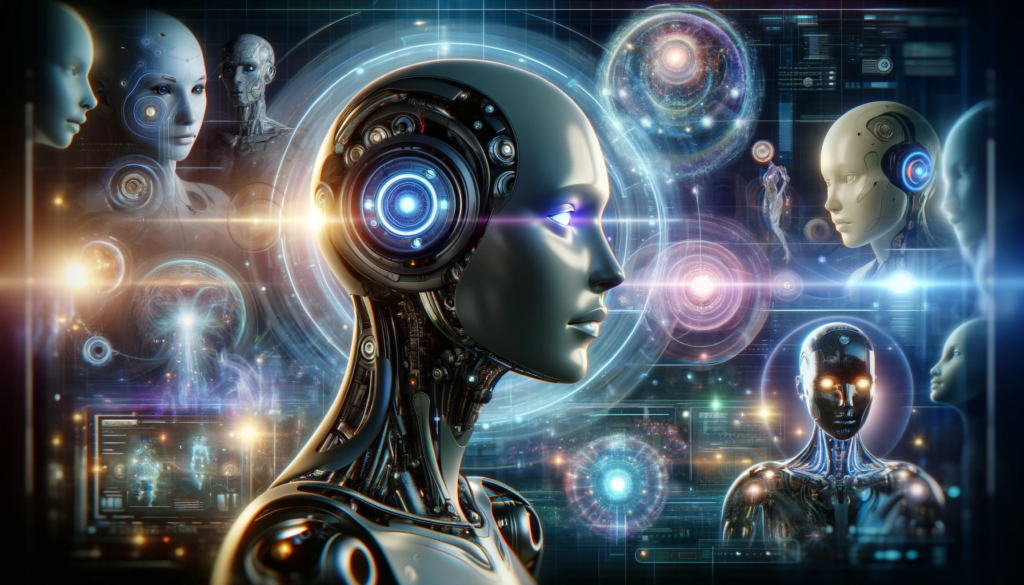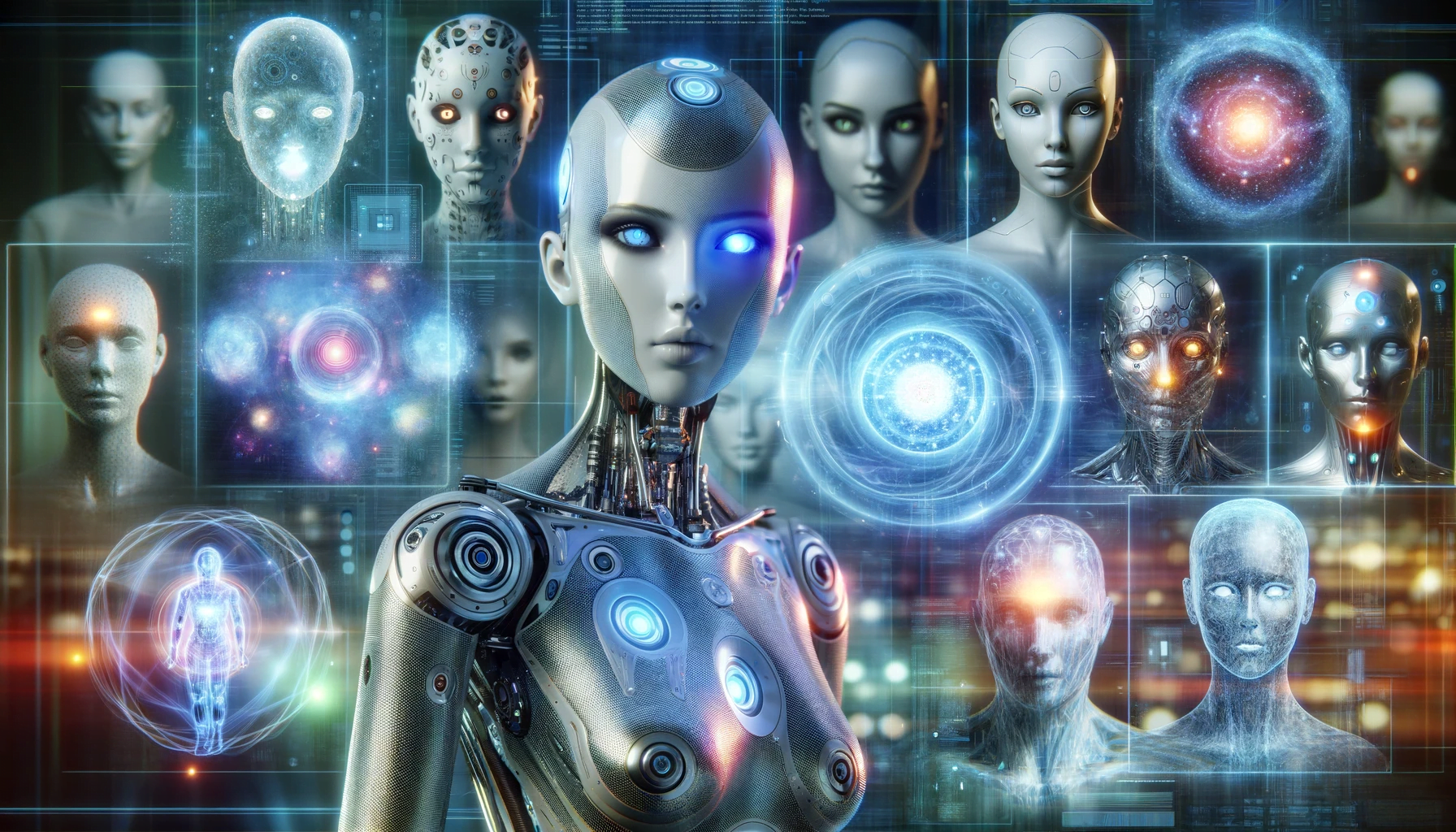The digital world is witnessing an unprecedented evolution with the rise of AI-created personas. These digital characters, crafted by sophisticated AI technologies, are reshaping how we interact online. From AI-generated Instagram models like Aitana Lopez to AI girlfriends flooding the OpenAI GPT store, the possibilities seem limitless. This article delves into how AI is used to create these personas and their impact on digital interaction.
Aitana Lopez: The AI-Generated Instagram Fitness Model
Aitana Lopez, an AI-created Instagram fitness model, has become a sensation, earning up to $11,000 a month. With her digital presence, Aitana represents a significant advancement in AI-generated content, attracting a substantial following and proving the commercial viability of such personas. Her success is a testament to the potential and profitability of AI in creating compelling, human-like digital characters.
AI Girlfriends: A Response to Modern Loneliness
The proliferation of AI girlfriends, as seen in the OpenAI GPT store, reflects the growing demand for digital companionship. These AI chatbots, designed to simulate romantic or friendly relationships, cater to a range of preferences, from “Korean Girlfriend” to “Virtual Sweetheart.” The popularity of these AI personas highlights a societal shift towards accepting AI as part of personal and emotional life.

Arabic AI models made by the raiday.ai
Lets’ end with an example of Generative AI female models created by our RAIDAY team in an Arabic song featuring a catwalk of AI generate models in a surreal Dubai, immerse yourself in the rich cultural tapestry of the Middle East, brought to life through stunning visuals and captivating sounds.
How AI Creates Personas
- Data Collection: The process begins with gathering data like customer feedback or interviews to understand the target audience.
- Pattern Analysis: AI and machine learning analyze this data to identify patterns and develop personas based on characteristics like demographics, interests, and behavior.
- Deployment: These AI-generated personas are then used in marketing campaigns, customer segmentation, and creating personalized experiences.
Challenges in Creating AI Personas
- Capturing User Preferences: AI must accurately capture and interpret user behavior and preferences, a complex task requiring a nuanced understanding of human interaction.
- Modeling Language and Social Skills: AI-generated personas must converse naturally, a task that’s been significantly advanced by large language models (LLMs) but still presents challenges.
- Recognizing Context: Understanding the context of interactions remains a significant hurdle, as misinterpretations can lead to misleading or false responses.
- Managing Complex Interactions: Tracking long-term user history and maintaining coherent interactions over time is another area where AI personas are still evolving.
What tools can be used to create AI personas?
Creating AI personas involves a combination of tools and technologies, each playing a crucial role in developing a realistic and engaging character. Here are some of the key tools commonly used in this process:
- Artificial Intelligence Platforms: These are the backbone of creating AI personas. Platforms like OpenAI’s GPT-3, Google’s BERT, or IBM Watson are used for their advanced natural language processing and generation capabilities.
- Machine Learning Frameworks: Tools like TensorFlow, PyTorch, and Keras are used for training AI models on large datasets, enabling the AI to learn and mimic human-like behaviors and responses.
- Data Analysis Software: Tools like Tableau, Microsoft Power BI, or even Python libraries (Pandas, NumPy) are used to analyze and interpret the data that feeds into the AI model, helping to understand user preferences and behaviors.
- Chatbot Development Platforms: For AI personas functioning as chatbots, platforms like Dialogflow, Microsoft Bot Framework, or Chatfuel provide the necessary infrastructure to create, test, and deploy conversational agents.
- 3D Modeling and Animation Software: In cases where the AI persona has a visual component, software like Blender, Autodesk Maya, or Adobe Character Animator is used to create and animate the digital character.
- Voice Generation Technology: Tools like Google Cloud Text-to-Speech, IBM Watson Text to Speech, or Amazon Polly are used to give AI personas a realistic and natural-sounding voice.
- Emotion Recognition Technology: Software that can analyze and interpret human emotions, like Affectiva or Emotibot, can be integrated to make AI personas more responsive to emotional cues.
- Cloud Computing Services: Platforms like AWS, Google Cloud, or Microsoft Azure provide the necessary computing power and storage capabilities to handle the processing requirements of AI models.
- APIs and SDKs: Various APIs (Application Programming Interfaces) and SDKs (Software Development Kits) are used to integrate different functionalities and data sources into the AI persona.
- User Interface Design Tools: For creating the front-end through which users interact with the AI persona, UI/UX design tools like Adobe XD, Sketch, or Figma are used.

Each of these tools contributes to creating a sophisticated and believable AI persona, capable of engaging with users in a meaningful and personalized way.
The creation of AI personas like Aitana Lopez and AI girlfriends marks a new era in digital interaction. While challenges remain, the advancements in AI technology continue to push the boundaries of what’s possible, leading to more sophisticated and realistic digital personas.
FAQ:
Q1: What is an AI-generated persona? An AI-generated persona is a digital character created by AI technologies that imitate the behavior and qualities of real human personas, used in various applications like marketing and virtual conversations.
Q2: How does AI create these digital personas? AI creates digital personas by gathering and analyzing data on user preferences and behavior, then developing personas based on patterns identified in this data, which can include demographics, interests, and behavior patterns.
Q3: What are some examples of AI-generated personas? Aitana Lopez, an AI-generated Instagram fitness model, and various AI girlfriend chatbots available on the OpenAI GPT store are examples of AI-generated personas.
Q4: What are the challenges in creating AI-generated personas? Challenges include capturing and interpreting user preferences accurately, modeling natural language and social skills, understanding the context of interactions, and managing complex, long-term interactions.
Q5: Can AI-generated personas be commercially successful? Yes, AI-generated personas can be commercially successful, as evidenced by Aitana Lopez, who earns a substantial income through her online presence.

